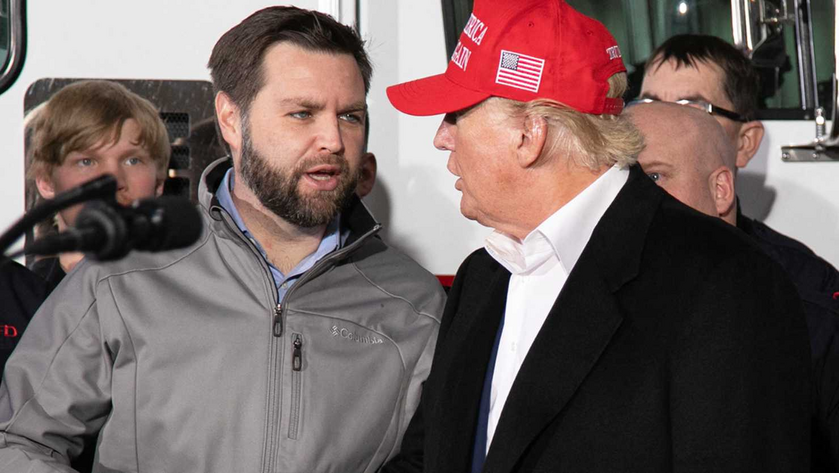The next four years for the MAGA movement are pivotal. With Donald Trump constitutionally barred from seeking another term after 2028, the movement faces the dual challenge of achieving its goals while ensuring its survival beyond Trump’s leadership. The coalition that propelled Trump to victory is broad and ideologically diverse, making it both a strength and a vulnerability. Based on historical context and current realities, three primary challenges emerge as critical for the MAGA movement:
1. Fiscal Conservatism vs. Populist Spending
One of the most significant internal contradictions within the MAGA agenda lies in its fiscal policy. The movement champions tax cuts while proposing increased spending on key priorities such as military readiness, infrastructure, and entitlement protections. For example:
- Trump’s promise to reduce taxes for middle-class Americans, veterans, first responders, and specific labor sectors (e.g., service workers) could cost trillions in lost revenue.
- At the same time, MAGA’s foreign policy stance demands significant investment in military preparedness to deter adversaries like China, Russia, and Iran.
This creates a paradox. While deregulation and economic growth can generate some revenue, history shows that tax cuts alone rarely eliminate deficits. Reagan faced significant deficits despite record growth, and George W. Bush similarly struggled to balance tax cuts with spending. With mandatory entitlement programs comprising the majority of federal spending, meaningful budget cuts are politically difficult. Any attempt to significantly cut Social Security, Medicare, or military spending would alienate core MAGA constituencies like retirees, veterans, and working-class families.

2. Foreign Policy Coherence Without Dividing the Base
MAGA’s foreign policy—rooted in Jacksonian principles of “no better friend, no worse enemy”—resonates with its anti-interventionist base. However, geopolitical realities will force the next leader of the movement to make difficult decisions. Key challenges include:
- Restoring Deterrence Without Endless Wars: MAGA’s aversion to prolonged conflicts is clear, yet America’s adversaries will test its resolve. From China’s aggression in the Pacific to Russia’s ambitions in Ukraine, a future MAGA leader must balance the need for strength with the desire to avoid unnecessary entanglements. Strategic military actions may be required, but these must be carefully framed to avoid alienating the anti-war elements of the MAGA coalition.
- Immigration Policy and National Security: Trump’s promise to limit H-1B visa abuse and enforce stricter deportations remains a cornerstone of MAGA policy. Yet, as businesses push for more foreign labor in sectors like tech, agriculture, and manufacturing, the next leader must strike a balance between protecting American workers and meeting economic demands.
The challenge lies in reconciling these priorities without losing support from either the anti-globalist core or the business-friendly conservatives who have joined the coalition.

3. Managing a Fragmented and Expanding Coalition
Trump’s success in broadening the Republican base is both an achievement and a challenge. MAGA now includes working-class whites, minorities, libertarians, disaffected Democrats, and even Silicon Valley elites. While this coalition helped Trump win record Latino and Black support, it also introduces competing priorities. For example:
- Economic nationalists may oppose free-market conservatives.
- Social conservatives may clash with libertarian technocrats like Elon Musk and Vivek Ramaswamy.
- Blue-collar voters might resent policy compromises made to appease elite donors or corporate interests.
The necessity of broadening the coalition stems from the GOP’s historical struggles in popular vote tallies. Republicans have lost seven out of the last eight popular votes, with George W. Bush in 2004 being the only exception since 1988. Expanding the base is essential for future viability, but doing so risks diluting the ideological cohesion that defines MAGA.

The Role of the Democrats in MAGA’s Strategy
Ironically, the biggest asset to the MAGA movement’s cohesion may be the Democratic Party itself. As long as Democrats remain beholden to their “woke” agenda and Trump Derangement Syndrome (TDS) narratives, they provide a unifying enemy for MAGA. Policies perceived as radical—such as gender ideology, open borders, or climate alarmism—alienate moderates and working-class voters, driving them toward the Republican Party.
The Democrats’ smartest move would be a pivot to the center, recapturing middle-class independents and moderates disillusioned with MAGA’s populism. However, this is unlikely for several reasons:
- Progressive Domination: The left wing of the Democratic Party exerts disproportionate influence on policymaking, leaving little room for centrism.
- Internal Fractures: A centrist pivot would likely alienate progressive activists, further splintering the party.
- Egos and Strategy: Many Democrats remain consumed by their opposition to Trump, preventing them from articulating a cohesive, forward-looking agenda.
Even if individual Democrats attempt moderation, the party as a whole lacks the unity to execute this strategy effectively. This dysfunction plays into MAGA’s hands, allowing it to position itself as the defender of common sense against an overreaching left.
Why J.D. Vance Is the Key to MAGA’s Future
While Trump’s leadership has been pivotal in building the MAGA movement, his inability to run again in 2028 presents a significant challenge. Historically, movements centered on larger-than-life figures struggle to survive without them. To ensure continuity, the movement must rally behind a successor who embodies Trump’s vision while appealing to the broader coalition he has built. J.D. Vance is uniquely positioned to fulfill this role.
Historical Parallels with Continuity:
The only vice presidents who successfully succeeded their presidents were Martin Van Buren after Andrew Jackson and George H.W. Bush after Ronald Reagan. Both Jackson and Reagan were transformative figures whose policies (Jacksonian populism and Reaganism) shaped their parties for decades. Van Buren and Bush succeeded by presenting themselves as continuators of their predecessors’ legacies. MAGA, like Jacksonianism and Reaganism, requires a disciplined successor to sustain its momentum.Blue-Collar Credibility:
Vance’s background as a working-class Ohioan and author of Hillbilly Elegy allows him to connect with MAGA’s core constituency of blue-collar voters. His life story mirrors the struggles of many in the Rust Belt, making him an authentic representative of their concerns.Policy Expertise:
Unlike other potential successors, Vance is a policy wonk who understands the intricacies of MAGA’s agenda. He has articulated strong positions on trade, immigration, and cultural issues, demonstrating a commitment to the movement’s core principles. His intellectual rigor complements his populist appeal, making him a unifying figure for the coalition.Appealing to Moderates and Elites:
Vance’s measured tone and intellectual credentials make him palatable to suburban moderates and the business community. This expands MAGA’s appeal without compromising its populist foundation.

Conclusion: MAGA’s Path Forward
The future of the MAGA movement depends on navigating its internal contradictions, responding to external challenges, and ensuring leadership continuity. While Trump remains its guiding force, the movement’s survival beyond his presidency requires a successor who can unify its diverse coalition while staying true to its principles.
J.D. Vance is the natural choice. His blue-collar roots, intellectual depth, and commitment to America First policies position him as the heir to Trump’s legacy. Like Van Buren and Bush before him, Vance can ensure that the transformative agenda of his predecessor endures.
As long as MAGA remains focused on its core mission—putting America First—it can withstand the pressures of coalition politics and Democratic opposition. By staying the course and rallying behind a leader like Vance, the movement can secure its place in American political history, ensuring that the policies of Donald Trump remain a defining force for generations to come.













